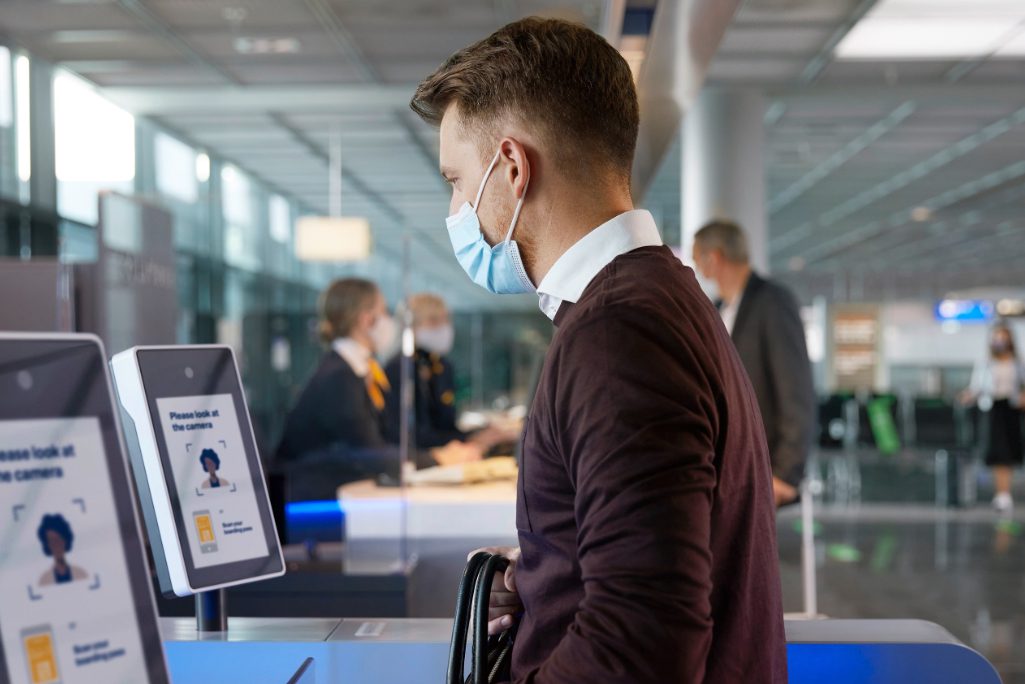Skift Take
Star Alliance says its move to Amazon Web Services has let it more quickly enhance many passengers' processes. That's promising news because a lot of digital innovation is still needed for booking and traveling on international itineraries served by more than one carrier.
Star Alliance, a consortium of 26 carriers including United Airlines, Lufthansa, Singapore Airlines, Air Canada, and All Nippon Airways, completed last week its move of its applications to AWS (Amazon Web Services), a cloud computing vendor, with an initial goal of taming costs.
“We’re pretty clean when it comes to moving to the AWS cloud environment,” said Jeremy Drury, head of digital and technology at Star Alliance. “The move was deliberate. One [goal] was to reduce our costs as we go to 2021. [The second was] to be ready for the scale that we are expecting as traffic increases.”
During the pandemic, the cloud let Star Alliance cut its computing costs by 30 percent. The organization only paid for the reduced level of computing that it needed, rather than for excess on-premise servers.
CEO Jeffrey Goh said at industry online conference AWS Reinvent that he believed its computing costs based on normal travel volumes will be down by about a quarter.
Star Alliance’s migration from data centers to on-demand enterprise computing took place in stages, with the bulk of the data and applications moved to servers run by Amazon by February. Last week, Star Alliance moved its service that manages baggage tracking and transfer decision tools from Oracle to Amazon Aurora. The tools act as a hub for a large majority of the baggage messages that its members produce.
Star Alliance Digital Innovations
“In 2017, we made a deliberate shift in our strategy to be the most digitally advanced global airline alliance, delivering seamless travel experiences with a loyalty proposition that others would talk about,” Goh said, touting the cloud migration as the latest step in that endeavor.
Goh said he was especially pleased that the cloud migration had sped up some innovations. For instance, Star Alliance has been working more quickly at making interline seat selection an online process rather than a one based in call centers. The consortium now lets its customers select seats in advance on a connecting flight by another alliance partner using online tools. Some airlines, like United, are enabling this capability with several partners, Drury said.
Another innovation Star Alliance made this year that it credited to Amazon Web Services was optimizing its “connection service,” a product which allows the staff at airports to identify customers who are at risk of missing connections, put agents on the case for the passengers, and then move the passengers from one gate to the next and help them jump lines if necessary. The “transfer decision tool” that helps agents pinpoint which passengers to help is now hosted within Amazon’s cloud.
This year Star Alliance began adding a digital layer on top of the service, with a messaging service that directly contacts a passenger through a mobile app and gives the passenger instructions on how to pass through the airport quickly and make tight connections. Singapore Airlines pilot launched the digital map service for passengers connecting at London’s Heathrow in October.
Amazon Web Services offers some capabilities called “continuous integration,” which has allowed Star Alliance to develop and deploy solutions like that faster than it had done previously, Drury said. The cloud provider also makes it cheaper and faster to deploy new products worldwide than the older data center model.
“We’re looking next year to dig deeper into AWS’s data analysis tools,” Drury of Star Alliance said. “We’re sitting between many members. There’s a significant amount of data passing between airlines. We’re planning to start to build out a data lake to make use of analytics tools … and machine learning.”
CEO Goh has additional plans to add more innovation at Star Alliance. In November the organization began to roll out a new biometrics-based identification service, which lets passengers pass through curb-to-gate touch points within airports, such as check-in kiosks, bag-drop, and boarding gates, which traditionally require both passport and boarding pass, by using a secure identity management solution featuring facial recognition tech.
On Tuesday, it announced that passengers that use tech provider Amadeus‘ identity data exchange and verification solution, Traveler ID, which connects a passenger’s digital ID to any online and biometric portal at opportune moments of the traveler journey, will also be able to access existing or new airports that have implemented the Star Alliance biometrics solution.
Cloud Competition
Amazon essentially created the cloud services category. Today it retains at least half of the global market share, according to Gartner, a research firm. Amazon Web Services aims to help shift more travel companies into the cloud. David Peller, director, travel hospitality at AWS, noted in an interview that dozens of travel clients use AWS, including such as hotel groups Wyndham and Choice and airlines Southwest and United.
Other cloud computing players include Microsoft Azure, Google Cloud, and Oracle Cloud. Enterprises typically won’t want to become too dependent on any single vendor, so expect IT managers to take steps to keep the option of switching between players to sustain price competition.
Notably, Star Alliance worked with Tata Consultancy Services on its migration, and the industry-wide shift to the cloud promises to benefit many consultancies and tech shops.
The Daily Newsletter
Our daily coverage of the global travel industry. Written by editors and analysts from across Skift’s brands.
Have a confidential tip for Skift? Get in touch
Tags: amazon, amazon web services, cloud, star alliance
Photo credit: In November, Lufthansa Group debuted a contactless check-in service. Lufthansa is part of Star Alliance, a consortium of airlines, which has moved its computing to cloud storage vendor AWS. Lufthansa
